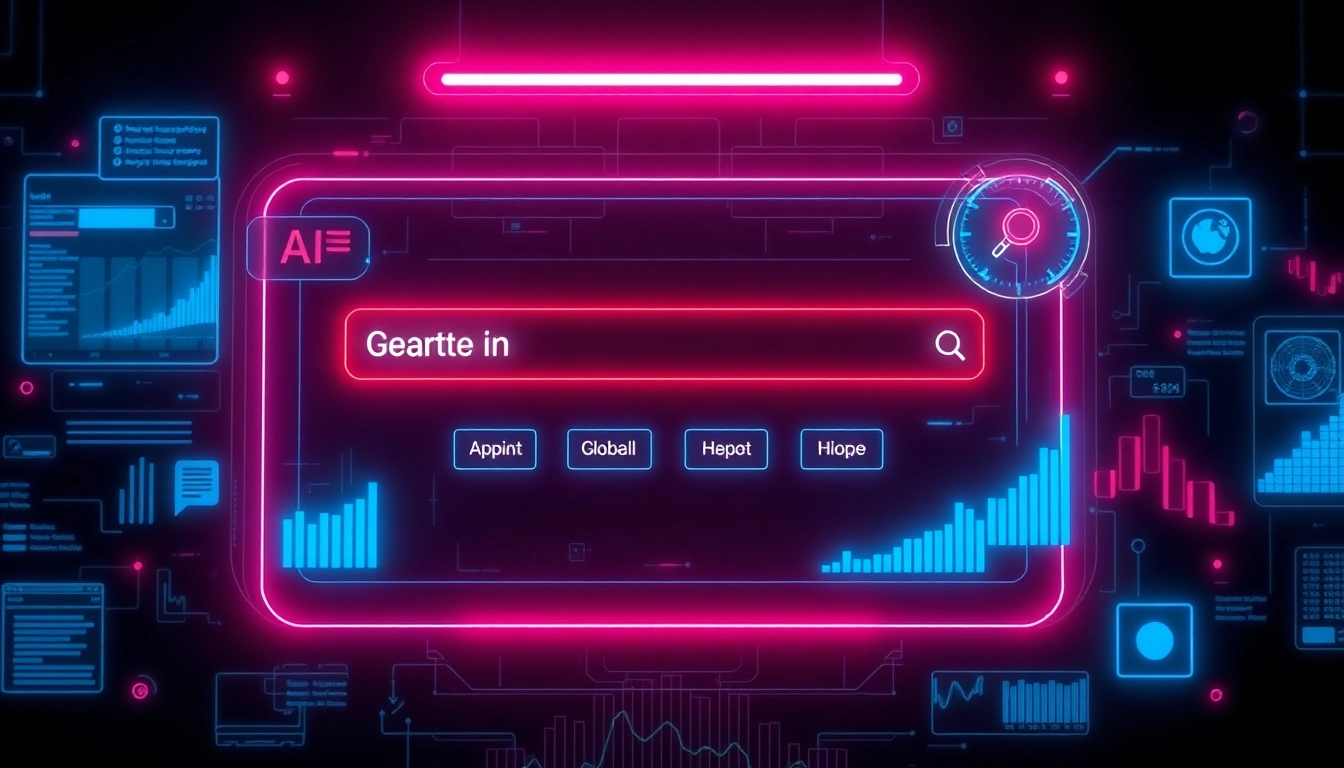Understanding AI Design Solutions
Definition and Scope of AI in Design
Artificial Intelligence (AI) in design represents a transformative force that revolutionizes how designers approach their work. AI design solutions encompass a range of technologies, including machine learning, natural language processing, and computer vision, that enable creators to enhance their design processes, automate repetitive tasks, and even generate new design concepts. These technologies streamline the creative workflow, allow for rapid prototyping, and foster innovative ideas that were once unimaginable.
Historical Context and Evolution
The integration of AI into the design industry has a relatively short yet impactful history. Initial AI applications in design primarily focused on automation—executing mundane tasks like resizing images or generating basic layouts. As AI technology evolved, designers began using more sophisticated algorithms capable of understanding complex data sets. Today’s AI solutions, such as generative design software, allow designers to create models based on desired parameters, considerations of performance, and aesthetic criteria. This significant shift places AI as a collaborator in the creative process rather than merely a tool.
Current Trends and Technologies in AI Design
Currently, the design sector is experiencing a surge of innovative AI technologies. Tools such as generative design software auto-generate numerous design variations based on preset constraints, facilitating a rapid exploration of ideas. Other tools, like AI-powered image enhancement and video generation software, empower designers to create high-quality content quickly. Moreover, AI chatbots and virtual assistants have also opened new avenues for client interaction, enabling real-time feedback and collaboration.
Benefits of Implementing AI Design Solutions
Enhanced Creativity and Inspiration
One of the most compelling advantages of integrating AI design solutions is the explosion of creativity they offer. By automating routine tasks and freeing up mental bandwidth, designers can focus on higher-order concepts. AI tools can suggest variations, generate new color palettes, or even craft unique design patterns based on historical data sets, effectively acting as a creative partner that can inspire new approaches and solutions.
Efficiency and Time-Saving Processes
Efficiency is another hallmark benefit of AI design solutions. Tasks that once required hours of manual labor—such as layout adjustments, resizing images, or experimenting with design variations—can now be completed in a fraction of the time. This increased productivity allows designers to take on more projects without sacrificing quality, increasing their profitability and enabling businesses to respond quicker to market needs.
Improved Collaboration and Client Engagement
AI tools can significantly enhance collaboration between designers and clients. With capabilities such as real-time editing, interactive design prototypes, and AI-driven analytics, designers can engage clients in the creative process more meaningfully. Clients can provide instant feedback and participate actively in design iterations, leading to results that align closely with their vision. As a result, the communication gap is minimized, and the design outcomes are more satisfactory.
Popular AI Design Tools and Platforms
Overview of Leading Solutions
Several AI design tools have emerged as leaders in the industry, each with unique offerings tailored to different design needs. Tools like AI design solutions provide users with powerful features that facilitate the blending of creativity and efficiency. For example, tools such as Canva’s Magic Design™ offer intuitive interfaces that allow users to generate designs based on text and media prompts, while platforms like Spacely AI specialize in photorealistic renderings for interior design.
Comparative Analysis of Performance
When evaluating AI design tools, performance metrics are crucial. For instance, analyzing how quickly tools generate designs and the quality of those outputs can guide a designer’s choice in software. Tools like Figma and Canva have advanced capabilities to enhance collaborative projects, while more complex programs like Autodesk’s Generative Design optimize for engineering and architectural projects. Designers should consider which tools align with their specific workflow to achieve the best results.
User Experiences and Case Studies
User experiences provide invaluable insights into the effectiveness of AI design tools. Case studies showcase how companies leverage AI in their design processes to innovate and excel. For example, a marketing firm might successfully reduce design turnaround time by 50% by implementing AI software, allowing for more agile campaign adjustments. These success stories can serve as benchmarks for other designers and firms looking to adopt AI solutions.
Challenges and Considerations in AI Design
Common Pitfalls for Designers
While AI design solutions offer numerous benefits, they are not without challenges. One common pitfall for designers is the potential over-reliance on AI technology, which could stifle creativity and lead to homogenized designs. It’s critical for designers to maintain their creative instincts and use AI tools as catalysts rather than crutches. Another challenge lies in adapting to rapidly changing technologies, which may overwhelm some traditional designers.
Ethical Implications of AI in Creative Work
The ethical dimensions of using AI in design cannot be overlooked. AI systems often learn from vast datasets that may contain biases—impacting the style or themes generated. Designers must remain vigilant about these discrepancies and strive for ethical practices that promote diversity and inclusion. Credit attribution is another ethical concern; as AI-generated works become prevalent, the conversation around intellectual property rights and recognition remains complex and evolving.
Future-Proofing Your Design Strategy
To successfully integrate AI design solutions, companies must future-proof their strategies. This includes investing in ongoing training for staff to understand and leverage AI capabilities fully. Additionally, staying updated with emerging technologies and tools is vital for maintaining a competitive edge. Establishing a flexible workflow that can adapt to technological advancements will position designers to thrive in the evolving landscape.
Best Practices for Integrating AI Design Solutions
Steps for Effective Integration
Integrating AI design solutions requires a thoughtful approach. Start with the identification of specific pain points within your design workflow that could benefit from AI intervention. Research and select suitable AI tools that align with your needs, then develop a structured implementation plan. Dedicating time to train your team on the new software will foster adoption and maximize its effectiveness.
Measuring Success and Performance Metrics
To gauge the success of AI integration, performance metrics should be established early on. Key areas to measure include design turnaround time, user satisfaction rates, and the impact on client engagement. Utilizing analytics tools to track these metrics can provide insights into where AI solutions are delivering value and where adjustments might be necessary for continuous improvement.
Continuous Learning and Adaptation
The landscape of AI design solutions is dynamic; therefore, a commitment to continuous learning is crucial. Keeping abreast of advancements in AI technology will embolden designers to innovate continually. Participating in webinars, workshops, and industry conferences will enrich understanding and provide valuable networking opportunities. Moreover, creating a culture of experimentation within your team can stimulate creativity and openness to new ideas.



